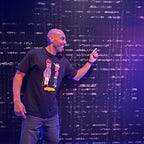I’m an Engineering Manger and I’ve Seen All Your Resumes: Here’s 4 Ways Junior Developers Can Avoid the Dreaded NO Pile
In the last 2 years alone, I’ve read through at least 100 resumes for open positions at my current company for junior developers. In addition, I’ve done around 500 calls with developers from around the world and seen hundreds more resumes and LinkedIn profiles.
As an engineering manager, when I get sent a stack of resumes to look through, I will divide them into 3 categories:
🔴 NO!
🟠 Maybe…
🟢 Yes!
Your goal as a junior developer is to avoid the NO pile.
Unfortunately, I’ve seen most of your resumes and the majority end up in the “maybe” pile which eventually turns into the “NO” pile once enough strong candidates have been identified.
You probably look like a lot of other candidates.
The maybe pile is where most resumes end up. Most resumes look the same and it’s hard to differentiate between bootcamp grads who basically wrote the same resume. The maybe pile tends to have these features.
- Fluffy summary which doesn’t tell me much about your contributions
- Passive language
- Lists of tasks rather than impact
- Counter-intuitive information organization
Honestly, because so many resumes look the same, it’s not that difficult to stand out.
Here’s how, step by step:
Work with me at Parsity.io and become a software engineer or just grab some free stuff..
Step 1: Impact over implementation
❌ “Built a full-stack app to track personal expenses using ReactJS and Ruby”
✅ “Led development for complex UI features for an expense tracking app, using ReactJS, leading to increased user satisfaction and more intuitive UX.”
Here’s a solid framework for speaking about projects you’ve done:
[Thing you did] + [impact/metric] + [technology]
You want the person reading this to imagine you as part of their team and the kind of impact you’ll have there. Which sentence makes you feel more confident about inviting the candidate for an interview?
Step 2: Brag more
❌ “Worked with a team of 5 to create a series of unit tests for a React App using Jest”
✅ “Organized and led front end unit testing strategy to achieve 75% overall test coverage and 100% coverage of mission critical user flows.”
You’re selling yourself here, not your team. Talk about what you did and highlight areas where YOU took the lead.
Autonomy is what most teams desire. If you led/organized/architected something then you will be a much less risky hire in their eyes.
Step 3: Don’t get too cute with your layout
I know that template looks really cool on your computer and honestly, that shade of green you used is pretty gosh dang impressive.
Here’s the thing, once it landed on my desk, it had been auto-formatted and looks god-awful. I am not going to even try to make sense of it. There are 25 more resumes to comb through before my next meeting.
NO pile.
Lastly, lay out the information in a way that makes it easy to see what’s important. I don’t care what they told you, you don’t HAVE to add your most recent experience at the top.
Here’s the layout I see work best for most people:
Summary at top — do NOT call yourself junior or mention switching careers. Lead with “Software developer with experience [list interesting tech]…”
Skills — always put the most interesting stuff first. “Typescript, ReactJS, Node/Express”, rather than “HTML/CSS, Javascript…”
Projects/Experience — Lead with the most relevant area. If you have a job which includes dev experience, even if it’s volunteer you need to list that at the top.
Education — Eh. Up to you. Impressive education is well, impressive. Personally, I’ve never asked anyone for their degree or what major they had. If they list a 1.5 GPA from a local community college — it’s unlikely to help their case.
Highlight stuff — bold the numbers, achievements and anything else you really want the reader to see. Remember, no one is really reading your resume in great detail. Draw the reader’s beady eyes to the areas they need to see
Step 4: Decrease surface area for bias
Humans are gonna human.
We have known and unknown biases.
Fair? No.
Reality? Yes.
Do you really need to tell them that you were a former french fry chef, prisoner or even went to a bootcamp?
BTW — I’ve worked with people from all of these categories and seen them hired. Join me/us in a totally not a cult-like way at Parsity.io and become a software engineer
Of course not. The choice is ultimately yours.
I have a very sordid past and I’ve only begun to share it after years as a developer. I understand that while some will be inspired by my pivot from a life of drugs and crime into tech, many others will be disturbed and turned off.
If your goal is to be hired, then decrease the chances for bias by removing information that others might perceive as a red flag. You don’t want someone to take a chance on you. You want to be a safe bet.
Conclusion (DON’T SKIP)
Ask 10 people for their opinion on your resume and you will get 10 different answers.
I wrote what I firmly believe will help you stand out.
Ultimately, you need to decide what you are comfortable with and perhaps A/B test your resume. Use 2 different versions and see which one performs better.
I sincerely hope this helps you get past that first hurdle while on the job hunt.
See ya’.
